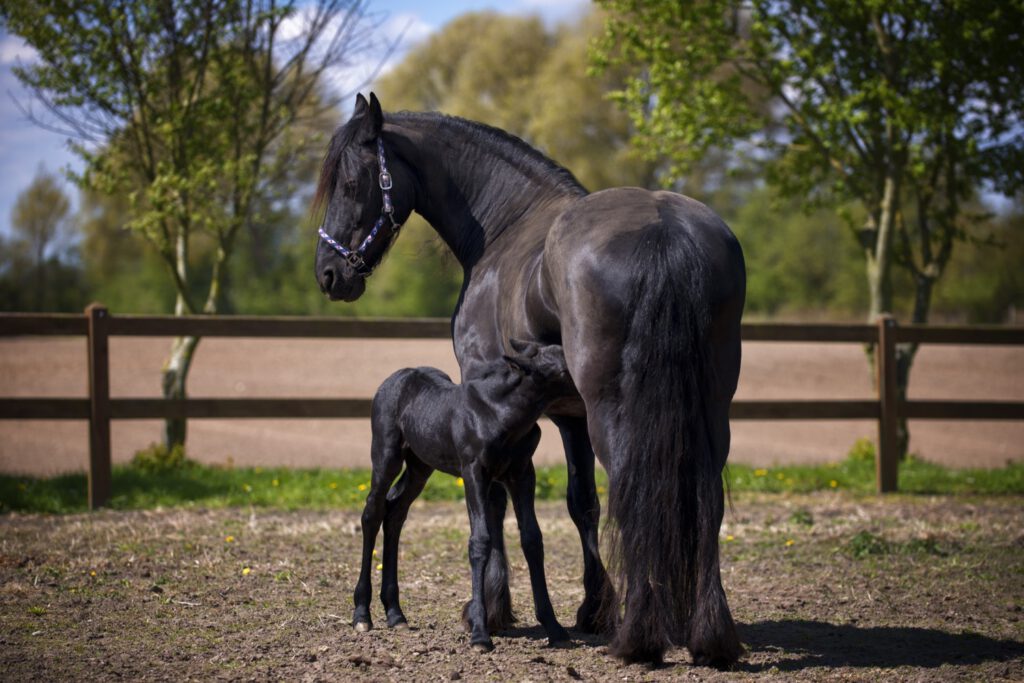Perfectly complementary to radiology in identifying the anatomical formations injured and the nature of the lesions, ultrasound has become a technique of choice in the examination of tendon and ligament lesions in the horse, to such an extent that it has nothing to envy in this field of application to the place it occupies in human medicine. The first indications for equine ultrasound were initially for the mare’s reproductive system, in particular for the early diagnosis of pregnancy. Then, the indications were extended to the diagnosis of tendon lesions in the horse before being extended to the examination of the various joint and muscle formations of the horse. Currently, ultrasound is the technique of choice for the diagnosis and medical-sports follow-up of metacarpal and metatarsal tendon lesions in sport and race horses.

In locomotor pathology, ultrasound examination was first widely used for the diagnosis and documentation of tendon injuries. Then, it quickly demonstrated its usefulness for the investigation of ligament and capsular injuries. Now, ultrasound has become indispensable for the study of joint injuries (arthropathies), especially those that do not show radiographic signs. Indeed, unlike its use in humans, ultrasound is not only related to reproductive issues in horses.
The basics of ultrasound in the mare
The principle of the technique is based on the reflection of ultrasound when it encounters an interface between two tissue structures with different physical properties. This reflection causes an echo, which is captured by the ultrasound probe and materialized by a white point. Thus, when a tissue such as a tendon has many different fibers, many echoes are generated at the boundary between adjacent fibers; the normal tendon is therefore very echogenic. On the contrary, when ultrasound passes through a fluid without interface, no echo is generated; the synovial fluid of the joints is therefore anechoic (not generating an echo) and appears completely black on the ultrasound screen. Finally, when a tendon or ligament has ruptured fibers and inflammation resulting in edema (thus a greater quantity of water), the injured element becomes hypoechoic (generating fewer echoes than in its normal state) and appears gray on the screen.
Basic ultrasound signs in the mare
Regardless of the anatomical formation involved (tendon, ligament, joint capsule), the sonographic signs indicative of injury are identical.
They include:
1 – an increase in size of the injured part of the anatomical element ;
2 – a change in echogenicity (hypoechoic lesions, appearing darker on the screen, more frequent than hyperechoic, brighter);
3 – architectural changes;
4 – a change in shape (induced by size change or peripheral lesion).
It is generally more sensitive than radiography for the identification of enthesopathies (pathology of tendon or ligament attachments on the bony insertion surfaces). For these lesions, the alteration of the tendon or ligament is associated with changes in the bone surface and the underlying bone. Ultrasound is indeed very sensitive to the latter, but since the bone surface reflects all the echoes, this technique is not adapted to the detection of skeletal lesions.
Ultrasound has now taken, alongside radiography, a predominant place in the diagnosis of joint lesions. Indeed, radiography only provides precise indications on the bony elements whereas ultrasound allows the examination of all the other components of the joint: the ligaments, the joint capsule, the articular cartilage and the underlying bony surface, and finally, the synovium and synovial membrane. Thus, ligament sprains are now perfectly objectifiable as well as meniscal lesions which are not rare in sport horses.
Advantages and limitations of ultrasound in mares
Ultrasound has many advantages:
- it is a non-invasive technique (non-aggressive), very well tolerated by the horse;
- the information is obtained immediately (in real time);
- it has an infinite variety of applications in all the body regions of the horse;
- the quality of the information/cost ratio is very good.
The major limitations are first of all related to the cost of investing in a good device and probes adapted to the various indications. Then, unlike radiography, the ultrasound image is not very communicative; it is often difficult to understand by the owner, and the image frozen on paper is less representative and less reliable than the image made in real time on the screen.
Nevertheless, the diversity of the lesions objectified demonstrates the diagnostic performance of ultrasound, which has become the indispensable complement to radiography in medical imaging of the musculoskeletal system in the horse. Thanks to the objective documentation it provides, it allows precise monitoring of the evolution of lesions, thus helping the veterinarian to determine the optimal level of physical activity of the affected subject and also to monitor certain problems of the animal related to its genetic heritage.
Ultrasound has considerably advanced the knowledge of equine locomotor pathology over the last fifteen years and the continuous technological progress is constantly increasing the precision of the images, expanding the nature of the indications and pushing back the limits of the non-explorable regions.
Discover Royal Horse’s B-100 and B-150 complementary feed, intended for broodmares and foals.
For more information: The reproductive mare


